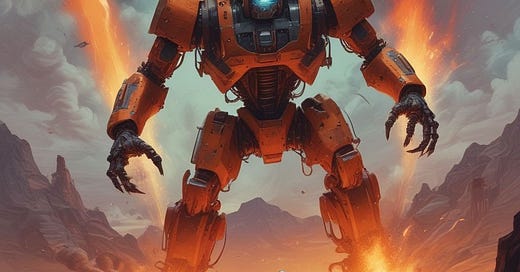Chapter 38: If you could see into the future, what would you want to find out?
Originally written September 7, 2021
This might sound strange from someone who obsesses with polls and analysis of polls in the months leading up to an election, but I’ve never really had much desire to “see into the future.”
I always related to Kris Kristofferson’s “Please Don’t Tell Me How the Story Ends” a lot more than I did Zager & Evans’ “In the Year 2525.” [Note from 2024: R.I.P. Kris…]
Let’s face it, as I’m pushing 70, [2024 Update: That push was successful] my own future isn’t exactly boundless. (I doubt I even make it to the year 2424.)
And, though people don’t know exactly when and how it comes, the end always is the same.
Spoiler alert for dumb people: YOU DIE!
(But please don’t die before you enjoy that Kristofferson song, below)
As a parent and a grandparent of course I care about how my offspring turn out.
I’ve already seen my two babies grow up into fine, functioning, loving, intelligent and creative adults.
But if I somehow was able to see anything horrible in the future for any of my kids, grandkids or other loved ones, why would I want to know, and live with that overwhelming dread?
Unless, of course, I had the power to prevent it.
But, indulging in this little fantasy a bit, even if I did have this magical clairvoyant superpower, what could I do with it really?
Tell one of my grandsons to avoid a certain street on a certain day in July 2053 because there’s a runaway dump truck with his name on it?
Tell the other to stay away from a specific shopping mall in November 2049 because some crazed Texan is determined to exercise his Second Amendment rights by wiping out all life forms in the food court that day?
I’m sure if I told them about any such prophetic visions they’d listen and act accordingly.
Just like all kids do when you tell them to be careful, especially if the warning is for something more than five minutes in the future.
And what about the so-called “butterfly effect”?
That’s a concept from chaos theory that maintains one small seemingly insignificant change in factors potentially can cause ripples that lead to huge, unforeseen consequences, i.e. the flapping of butterfly wings causing a tornado.
This is a common saw in time-travel fiction like the Back to the Future movies and books like Stephen King’s 11/22/63.
In the latter, the protagonist, high school teacher Jake Epping, goes back in time to prevent Lee Harvey Oswald from assassinating President Kennedy. (Like me, King does not believe in JFK conspiracy theories.)
And, speaking of spoiler alerts, Epping succeeds, but Kennedy’s survival eventually leads to a world that is far more grim and brutal than it is today.
I’d feel real real guilty if I did something like that.
So it’s probably a good thing that I will never be able to look into the future of my kids and grandkids. I can only wish them long, happy lives and the ability to overcome any mistakes and misfortunes that might befall them.
To be sure, I am a little curious to see which one of two favorite songs from the late ‘80s and early ‘90s — both titled “The Future” — comes to pass.
In his 1992 song of that name, Leonard Cohen sang, “I’ve seen the future, brother, it is murder.” (Here’s the song, with scenes from Natural Born Killers.)
But just three years earlier, Prince, in his song “The Future” from the Batman movie, sang, “I’ve seen the future and it works.”
Considering world events of this young century, I’d have to say Cohen seems to be closer to the mark.
But the future ain’t over yet.
Both Leonard and Prince died in 2016. So neither had a long future after releasing their respective “Future” songs.
As Doris Day, who outlived both Leonard Cohen and Prince, sang, “Que sera, sera / Whatever will be, will be / The future's not ours to see …”
(Here’s the song. But I prefer Sly’s version …)
A word about the AI art at the top of this chapter: 2024 Steve here. The giant robot art basically is a consolation prize. I tried not one, but two free AI apps trying to create a dystopian robot walking its pet human on a leash. Both apps instead gave me images like this one. And, despite several trials, both refused to show a robot walking a human. Could it be that AI has programed itself to not allow art depicting robots enslaving humans? First step in a robot propaganda war?!?!?What’s next??!??????!





